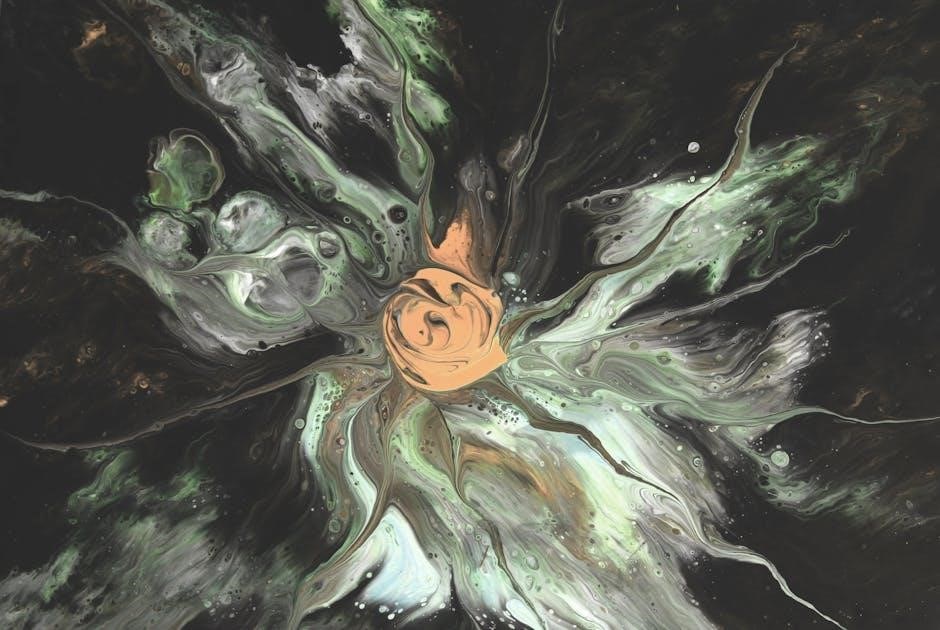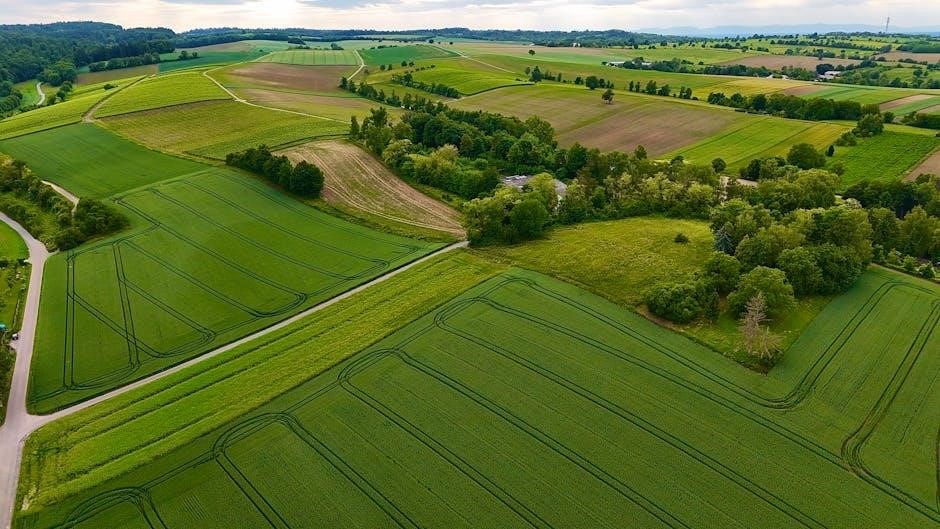Whittling patterns are essential guides for creating intricate designs in wood․ They offer a variety of designs‚ from simple shapes to complex sculptures‚ suitable for all skill levels․
1․1 What Are Whittling Patterns?
Whittling patterns are visual guides or templates used to create specific designs on wood․ They offer a wide range of designs‚ from simple shapes like animals to intricate sculptures․ These patterns cater to all skill levels‚ providing a clear outline for beginners and complex details for advanced carvers․ Available in PDF format‚ they are easily accessible and printable‚ allowing artists to trace and carve their designs accurately․ Whittling patterns are essential for achieving precise and professional-looking results in wood carving projects․
1․2 Importance of Using Patterns in Whittling
Using patterns in whittling ensures precision and consistency in designs․ They provide clear guidelines‚ making it easier for both beginners and experienced carvers to achieve professional results․ Patterns help in maintaining symmetry and proportion‚ reducing errors‚ and saving time․ They also inspire creativity by offering a wide range of designs‚ from simple shapes to intricate sculptures․ Additionally‚ patterns allow for repetition and scalability‚ enabling carvers to refine their skills and tackle complex projects with confidence․ This makes patterns an indispensable tool for mastering the art of whittling․

Popular Whittling Patterns PDF Resources
Discover a variety of whittling patterns in PDF format‚ offering detailed designs for beginners and experts alike․ These resources include “1001 Designs for Whittling and Woodcarving” by Tangerman‚ “Easy Wood Carving Patterns PDF‚” and “Chip Carving: Geometric Patterns to Draw and Chip Out of Wood․” They provide a wide range of projects‚ from simple animal shapes to intricate sculptures‚ ensuring endless creativity and precision in your whittling journey․
2․1 “1001 Designs for Whittling and Woodcarving” PDF
1001 Designs for Whittling and Woodcarving by E․J․ Tangerman is a timeless resource offering 1001 detailed patterns for woodcarvers․ This PDF is ideal for both beginners and advanced carvers‚ featuring a wide range of designs‚ from simple animal figures to intricate geometric patterns․ It includes step-by-step instructions and tips‚ making it a versatile guide for enhancing your whittling skills․ Perfect for exploring various techniques‚ this collection is a must-have for anyone passionate about creating beautiful and functional woodcarvings․
2․2 “Easy Wood Carving Patterns PDF” Overview
The Easy Wood Carving Patterns PDF is a beginner-friendly guide offering simple yet creative designs․ It includes patterns for basic animal shapes‚ functional items‚ and decorative pieces․ Perfect for those new to whittling‚ this resource provides clear instructions and step-by-step photos․ The designs are easy to transfer to wood‚ making it ideal for practicing fundamental carving techniques․ With a focus on accessibility‚ this PDF helps build confidence and skills for future projects․
2․3 “Chip Carving: Geometric Patterns to Draw and Chip Out of Wood” PDF
This PDF focuses on chip carving‚ a specialized technique involving geometric patterns․ It provides detailed designs and instructions for creating intricate motifs using chipping methods․ Ideal for intermediate carvers‚ the guide emphasizes precision and symmetry‚ offering patterns that can enhance both decorative and functional projects․ With clear illustrations and step-by-step guidance‚ it helps master the art of chip carving‚ expanding one’s creative possibilities in woodwork․

Types of Whittling Patterns
Whittling patterns include animal designs‚ geometric shapes‚ and functional items‚ offering diverse creative options for carvers of all skill levels to explore and master․
3․1 Animal Designs and Figures
Animal designs are a popular choice for whittling‚ offering a wide range of creative possibilities․ From simple bird shapes to intricate wildlife figures‚ these patterns cater to all skill levels․ Beginners can start with basic forms‚ while advanced carvers can refine details like facial expressions or textures․ Many whittling patterns PDF resources include step-by-step guides for animal designs‚ making it easier to achieve professional-looking results․ These designs are not only aesthetically pleasing but also allow carvers to practice essential techniques like shaping and detailing․ They are a great way to bring life and character to woodworking projects․
3․2 Geometric and Ornamental Patterns
Geometric and ornamental patterns add elegance and symmetry to whittling projects․ These designs often feature intricate shapes‚ such as spirals‚ curves‚ and repetitive motifs‚ which can be combined to create visually striking pieces․ Ideal for practicing precision and detail work‚ these patterns are versatile and can be used to enhance functional items or standalone decorative art․ Many whittling patterns PDF resources include geometric templates‚ allowing carvers to explore complex designs with ease․ These patterns are perfect for those looking to refine their skills in creating balanced and aesthetically pleasing woodwork․
3․3 Functional Whittling Projects
Functional whittling projects combine artistry with practicality‚ creating items like spoons‚ bowls‚ and tool handles․ These designs are perfect for everyday use‚ blending form and function seamlessly․ Many whittling patterns PDF resources offer templates for making these items‚ guiding carvers through the process․ These projects are ideal for beginners and experienced carvers alike‚ allowing them to craft items that are both useful and beautiful․ Functional whittling projects provide a sense of accomplishment‚ as they transform raw wood into items that can be used and cherished․

Tools and Materials for Whittling
Essential tools include sharp whittling knives‚ gouges‚ and mallets․ Softwoods like basswood and pine are ideal for carving․ Proper materials ensure precise cuts and detailed patterns․
4;1 Essential Whittling Tools
Whittling requires a set of sharp‚ reliable tools․ A high-quality whittling knife with a curved or straight blade is fundamental․ Additional tools include gouges‚ mallets‚ and chisels for detailed work․ A small saw may also be useful for initial cuts․ Proper handling and sharpening are crucial for safety and precision․ Softwoods like basswood and pine are ideal for carving․ Always maintain tools in good condition to ensure clean cuts and smooth patterns․ Optional tools like rotary carving bits can enhance detail work‚ while sandpaper helps refine finishes․
4․2 Recommended Wood Types for Whittling
Basswood and pine are highly recommended for whittling due to their soft‚ even grain․ These woods are easy to carve and ideal for beginners․ Cedar is another popular choice‚ offering durability and a pleasant aroma․ Birch and aspen are also suitable‚ providing smooth textures for detailed work․ Avoid hardwoods like oak and maple‚ as they are denser and more challenging to carve․ Softwoods are best for intricate patterns‚ ensuring clean cuts and minimal resistance․ Choosing the right wood enhances the overall whittling experience and project outcome․

Basic Whittling Techniques
Mastering basic whittling techniques involves starting with simple cuts‚ using the right tools‚ and practicing fundamental strokes․ Begin with straight cuts‚ then progress to curved motions‚ ensuring smooth‚ controlled movements for precise results․ Always work safely‚ maintaining a firm grip on the wood and keeping fingers away from the blade․ Regular practice helps build confidence and skill‚ allowing you to tackle more complex patterns and designs effectively over time․
5․1 Safety Tips for Beginners
Always prioritize safety when whittling․ Use sharp tools to maintain control and avoid accidents․ Cut away from your body to prevent injury․ Wear gloves for extra protection․ Ensure your work area is clean and well-lit․ Start with softwoods like basswood or pine‚ as they are easier to carve․ Keep loose clothing tied back and long hair secured․ Avoid carving near flammable materials․ Store tools securely when not in use․ Practice proper blade handling and never leave a knife unattended․ Follow these guidelines to enjoy whittling safely and effectively․
5․2 Transferring Patterns to Wood
Transferring patterns to wood is a crucial step in whittling․ Start by printing the pattern on paper and tracing it onto the wood using a pencil or carbon paper․ Ensure the wood is smooth and dry for a clear transfer․ For intricate designs‚ use a stylus or fine-tip tool to trace details accurately․ Secure the paper with tape to prevent shifting․ Once transferred‚ review the pattern for clarity and make adjustments as needed before carving․ This step ensures your project aligns with your design vision;
Advanced Whittling Techniques
Advanced whittling involves refining details‚ creating intricate designs‚ and mastering complex patterns․ It requires precision‚ patience‚ and skill to achieve polished‚ professional-looking results in your projects․
6․1 Detailing and Refining Your Work
Detailing and refining are crucial for achieving professional-quality whittling projects․ Using fine tools‚ artisans can add intricate textures‚ smooth edges‚ and enhance pattern details․ Proper techniques ensure precision‚ making designs stand out․ Refining involves sanding and polishing to create a flawless finish‚ elevating the project’s aesthetic appeal․ These steps transform raw carvings into masterpieces‚ showcasing skill and craftsmanship․ Attention to detail is key to producing exceptional whittling artistry․
6․2 Combining Multiple Patterns in One Project
Combining multiple patterns in one project enhances creativity and complexity․ By merging designs from different sources‚ such as animal figures with geometric motifs‚ artisans create unique pieces․ This technique allows for intricate details and layered compositions‚ appealing to experienced whittlers․ Proper planning and alignment of patterns ensure a cohesive final product․ Using tracing paper to sketch layouts beforehand helps achieve balance․ This advanced method enables craftsmen to produce distinctive‚ visually striking works that showcase their mastery of whittling artistry․

Whittling Projects for Beginners
Beginners can start with simple projects like basic shapes or functional items․ Free PDF resources offer easy-to-follow designs‚ step-by-step instructions‚ and tips for a smooth learning curve․
7․1 Simple Animal Shapes
Simple animal shapes are a great starting point for beginners․ Patterns like birds‚ fish‚ or small mammals are easy to follow and require minimal tools․ These projects help develop basic whittling skills‚ such as cutting curves and smoothing edges․ Many free PDF resources offer step-by-step instructions and templates for tracing designs onto wood․ Practicing with these shapes builds confidence and familiarity with wood behavior‚ making it easier to progress to more complex designs․ They are ideal for honing fundamental techniques while creating charming‚ functional‚ or decorative pieces․
7․2 Basic Functional Items
Basic functional items‚ such as spoons‚ spatulas‚ or small containers‚ are practical whittling projects for beginners․ These designs focus on creating usable objects while honing essential skills like cutting‚ carving‚ and smoothing․ Patterns for these items are widely available in PDF formats‚ offering clear instructions and templates․ They allow learners to practice working with different wood types and tool techniques․ Completing these projects not only builds confidence but also results in items that can be used daily‚ making them rewarding and meaningful whittling exercises․

Intermediate Whittling Projects
Intermediate projects involve more complex designs‚ such as detailed animal figures or functional items like bowls․ These patterns enhance precision and technique‚ offering a creative challenge․
8․1 Creating Detailed Figures
Intermediate whittling projects often involve crafting detailed figures‚ such as animals or human forms․ These designs require precision and patience‚ as they involve intricate cuts and shaping․ Using patterns from resources like “1001 Designs for Whittling and Woodcarving” or “Chip Carving: Geometric Patterns to Draw and Chip Out of Wood” can guide you in achieving realistic features and textures․ Start by sketching your design on paper before transferring it to wood‚ ensuring accuracy in every stroke of your knife․
Pay attention to symmetry and proportions to bring your figure to life․ Refine details gradually‚ working from larger shapes to finer elements․ Practice on softer woods like basswood or pine to minimize mistakes․ Remember‚ creating detailed figures is a process that enhances your skill and creativity in whittling․
8․2 Intermediate Functional Projects
Intermediate functional whittling projects combine creativity with practicality‚ creating usable items like spoons‚ bowls‚ or small containers․ These projects require more advanced techniques‚ such as handling curves‚ hollowing‚ and smoothing surfaces․ Patterns from resources like “1001 Designs for Whittling and Woodcarving” or “Easy Wood Carving Patterns PDF” can inspire and guide you․ Choose the right wood type‚ such as birch or beech‚ for durability․ Start with precise cuts‚ gradually refining edges and surfaces․ These projects enhance your skill and provide functional‚ handmade items for everyday use․

Advanced Whittling Projects
Advanced whittling projects involve intricate sculptures‚ complex designs‚ and multi-pattern integration‚ pushing creativity and skill to new heights with detailed precision and artistic expression․
9․1 Intricate Designs and Sculptures
Intricate designs and sculptures in advanced whittling require precision and skill․ Patterns often feature detailed geometric shapes‚ ornate animal figures‚ and elaborate floral motifs․ These projects demand careful planning and execution‚ using high-quality tools to achieve fine details․ Sculptures can range from lifelike animals to abstract art‚ showcasing the artist’s mastery․ PDF resources provide templates and step-by-step guides‚ helping craftsmen bring complex visions to life․ Practice and patience are key to refining these sophisticated creations․
9․2 Complex Functional Items
Complex functional items in advanced whittling combine artistry with utility․ Patterns often include intricately carved boxes‚ decorative spoons‚ or ornamental bowls․ These projects require precise techniques and detailed designs to ensure both beauty and usability․ PDF guides offer step-by-step instructions and photos to help craftsmen master these challenging yet rewarding creations․ From multi-piece constructions to textured surfaces‚ these items showcase advanced skills and creativity‚ blending practicality with artistic expression․

Resources for Whittling Patterns PDF
Explore various websites‚ eBooks‚ and communities offering free and premium whittling patterns․ Find detailed designs‚ step-by-step guides‚ and inspiration for projects of all skill levels online․
10․1 Websites Offering Free Whittling Patterns
Several websites provide free whittling patterns‚ catering to both beginners and experienced carvers․ These sites offer a variety of designs‚ from simple animal shapes to intricate geometric patterns․ Popular options include downloadable PDFs‚ such as “Easy Wood Carving Patterns PDF” and “Chip Carving: Geometric Patterns to Draw and Chip Out of Wood․” Additionally‚ some platforms feature tutorials and step-by-step guides to help users bring their projects to life․ These resources are perfect for those looking to explore new designs or refine their skills without cost․
10․2 Books and eBooks on Whittling
Books and eBooks are valuable resources for whittling enthusiasts‚ offering detailed patterns and techniques․ Titles like 1001 Designs for Whittling and Woodcarving and Chip Carving: Geometric Patterns to Draw and Chip Out of Wood provide extensive design libraries․ Many of these books are available as eBooks‚ making them easily accessible․ Additionally‚ some authors offer free downloadable PDFs‚ such as Russell Scott’s patterns․ These resources are ideal for both beginners and advanced carvers‚ serving as comprehensive guides to mastering whittling and woodcarving techniques․
10․3 Online Communities and Forums
Online communities and forums are vibrant hubs for whittling enthusiasts to share knowledge‚ patterns‚ and techniques․ Websites like Woodcarving Illustrated and specialized forums offer free whittling patterns‚ tutorials‚ and project ideas․ YouTube channels and social media groups provide step-by-step guides and inspiration․ These platforms foster collaboration‚ allowing carvers to showcase their work‚ receive feedback‚ and learn from experts․ They are invaluable resources for staying updated on trends and accessing a wide range of whittling patterns and tips․

Tips for Downloading and Using Whittling Patterns PDF
Ensure compatibility with your tools‚ use step-by-step guides‚ and scale patterns to fit your project needs for optimal results and a seamless whittling experience․
11․1 How to Choose the Right Pattern
When selecting a whittling pattern‚ consider your skill level‚ available tools‚ and wood type․ Opt for simple designs with clean lines for beginners․ Ensure the pattern matches your project’s purpose and size․ Transfer the design to wood by tracing or printing‚ and prioritize safety by avoiding overly delicate details․ Choose patterns suitable for your wood type and tools‚ and start with free resources to experiment before investing․ Evaluate the pattern’s complexity and alignment with your goals to enhance your whittling experience․
11․2 Printing and Scaling Patterns
Print patterns on A4 paper for clarity‚ ensuring they fit your project size․ Use software to resize designs if needed․ Trace or redraw patterns onto wood using graphite or carbon paper․ For intricate details‚ print at higher resolutions․ Test patterns on scrap wood before final projects to ensure accuracy․ Adjust scaling to match your tool capabilities and wood thickness․ Proper printing and scaling ensure precise transfers‚ enhancing your whittling results and project success․
Whittling patterns PDFs offer versatile designs‚ from simple to intricate‚ helping crafters enhance their skills․ They provide clear guides‚ fostering creativity and mastery in wood carving projects․
12․1 Final Thoughts on Whittling Patterns PDF
Whittling patterns PDFs are invaluable resources‚ offering a wide range of designs from simple to intricate․ They cater to all skill levels‚ providing step-by-step guides and tips․ These PDFs are easily accessible‚ with many available for free download‚ featuring printable templates for various projects․ Whether you’re a beginner or an advanced carver‚ they help refine skills and inspire creativity․ With detailed instructions and versatile designs‚ whittling patterns PDFs are essential tools for mastering the art of wood carving and creating beautiful‚ functional pieces․
